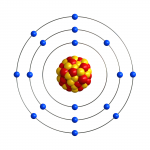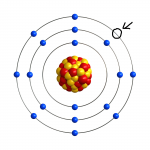So I was watching this nice information packed video on SWCGs...
And JoyfulNoise sort of mentioned off-hand that pool store workers "don't understand that the chlorine cycle in salt water generators is a closed system" and this is why you don't have to keep adding salt. To which I told my screen "wait what? "
This sort of led me down a rabbit hole of questions, starting with "what's so special about SWG chlorine that you don't have to keep adding salt like liquid chlorine?" From there I hit "well, why DO you have to keep adding chlorine? Where does it go?" and "why does sunlight eat chlorine anyway?" "WTH is SLAMing doing anyway?" "Forget chlorine, where does all the biomatter that gets disinfected go?"
I haven't really gotten too far with any of these yet, except (maybe?) sunlight (or UV treatments actually, but I'm assuming sunlight is similar) promotes the formation of chlorine disinfection byproducts (like trihalomethanes and chloroform) as given in this 16-year-old paper:
I guess CYA stabilizes chlorine because it prevents the DBPs from forming? So far my Google-foo is failing to sate my curiosity.
And JoyfulNoise sort of mentioned off-hand that pool store workers "don't understand that the chlorine cycle in salt water generators is a closed system" and this is why you don't have to keep adding salt. To which I told my screen "wait what? "
This sort of led me down a rabbit hole of questions, starting with "what's so special about SWG chlorine that you don't have to keep adding salt like liquid chlorine?" From there I hit "well, why DO you have to keep adding chlorine? Where does it go?" and "why does sunlight eat chlorine anyway?" "WTH is SLAMing doing anyway?" "Forget chlorine, where does all the biomatter that gets disinfected go?"
I haven't really gotten too far with any of these yet, except (maybe?) sunlight (or UV treatments actually, but I'm assuming sunlight is similar) promotes the formation of chlorine disinfection byproducts (like trihalomethanes and chloroform) as given in this 16-year-old paper:
I guess CYA stabilizes chlorine because it prevents the DBPs from forming? So far my Google-foo is failing to sate my curiosity.
Last edited by a moderator:




